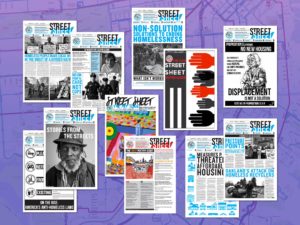by Jordan Wasilewski
In springtime of 2025, the conversation around sober and recovery housing continues from San Francisco to Sacramento. Matt Haney’s Assembly Bill 255 allows cities and counties to set aside up to 25% of state homelessness funds for sober living quarters. The set-aside is not required: It’s merely an ask for permission to allocate funding for up to 25% of permanent supportive housing units of funds for sober living, which a county can decide to either a) ask for the full 25%, b) decline altogether, or c) modify to some number up to 25%.
I’ll concede that some people may need and should access drug- and alcohol-free environments. However, this is something that a prospective tenant should decide to commit to: It should never be the default option for those in the pipeline for permanent supportive housing.
This raises some important questions about the plan’s workability.
1) What is the real demand for this type of living situation?
Last year, I wrote about the Tenderloin Housing Clinic’s survey on sober housing and its questionable methodology. To truly gauge support for sober living, an independent party should conduct a poll among permanent supportive housing tenants to determine their specific needs, with nobody’s thumb on the scale. An even better idea would be for the Department of Homelessness and Supportive Housing to make available applications for sober-living units before they make the pipeline. Should any sober housing go forward, there needs to be an accurate assessment of the true demand, otherwise, there will be empty sober housing units.
2) What does sobriety mean?
As a marijuana consumer, I am concerned that this type of housing would ban drugs with lower risk of addiction, such as marijuana, mushrooms, LSD, etc. In addition, there are people who may wish to use alcohol and marijuana—two drugs that are considered more “acceptable” by San Franciscans and, increasingly, the rest of the country—but may wish to have an environment free of hard drugs. If we are to have recovery housing, there need to be various intermediate options, like scattered-site housing where landlords might be reticent to rent to someone who uses hard drugs but could rent to someone who uses marijuana and alcohol while shying away from hard drugs.
3) What happens during a relapse?
The legislation has an answer to this question:. If a person relapses and recovery housing does not work for them, they can be referred back to permanent supportive housing that does not have sobriety requirements. On paper, this seems fine, as this emphasizes eviction prevention. Still, there are unhoused individuals and people in shelters waiting for permanent housing, meaning that a non-sober unit may not be available in a timely manner for someone who has relapsed.
4) Could there be time limits or an incentive to move on for some sober sites?
Some individuals who have made a commitment to recovery may only need sober housing during the early parts of recovery, when relapse is most likely. They could still move on to a subsidized unit without sobriety requirements in the community. There are many individuals who have maintained sobriety without living in sober housing. This could be a new form of contingency management, where if you live in sober housing for a certain amount of time, you can get a voucher for a subsidized unit.
In a city where a large amount of permanent supportive housing is outnumbered by an even larger population eligible for permanent supportive housing but unable to access it, policymakers must be thoughtful and intentional about expanding sober living opportunities. We must have rational actors, not recovery grifters at the table. Such policies need to be created with a scalpel, not a mallet, and the guardrails written on paper must actually be workable in real life. This might mean that it won’t be necessary for the City to avail itself of the state’s maximum of 25% funding for sober housing, while exploring different avenues.

